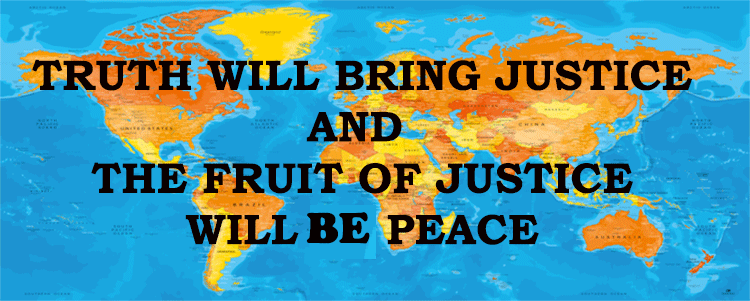 |
V
.
GEOGRAPHICAL SCIENCE IN CHRISTENDOM FROM THE FIRST
CRUSADES. CIRCA 1100-1460.
From the ninth century to the time of the Medieval and
Christian Renaissance, in the eleventh, twelfth, and thirteenth centuries, the
Arabs were the recognised heirs of Greek science, and
what Franks or Latins knew of Ptolemy or Strabo was either learnt or corrected
in the schools of Cordova and Bagdad.
But when the Northmen and the Holy War with Islam had
once thoroughly aroused the practical energies of Christendom, it began to
expand in mind as well as in empire, and in the time of Prince Henry, in the
fifteenth century, a Portuguese could say: “Our discoveries of coasts and
islands and mainland were not made without foresight and knowledge. For our
sailors went out very well taught, and furnished with instruments and rules of
astrology and geometry, things which all mariners and map-makers must know”.
In fact, compass, astrolabe, timepiece, and charts,
were all in use on the Mediterranean about 1400, just as they were to be found
among the Arab traders of the Indian Ocean.
In this section it will be enough to glance hastily at
the later and growingly independent science of Christendom, from the time that
it ceased merely to follow the lead of Islam, and thought and even invented for
itself. In another chapter we have seen something of the lasting and
penetrating influence of Greek and Moslem and Hindu tradition upon the Western
thought, which has conquered by absorbing all its rivals; we must not forget
that some original self-reliant work in geographical theory not less than in
practical exploration is absolutely needed to explain the very fact of Prince
Henry and his life—a student's life, far more even than a statesman's. And
after all, the invention of instruments, the drawing of maps and globes, the
reckoning of distances, is not less practical than the most daring and
successful travel. For navigation, the first and prime demand is a means of
safety, some power of knowing where you stand and where to go, such as was
given to sailors by the use of the magnet.
“Prima dedit nautis usum magnetis Amalphis”, says Beccadelli of Palermo, but the earliest mention of the “Black ugly stone” in the West is
traced to an Englishman. Alexander Neckam, a monk of
St. Albans, writing about 1180 on "The Natures Of Things," tells us
of it as commonly used by sailors, not merely as the secret of the learned. “When
they cannot see the sun clearly in cloudy weather, or at night, and cannot tell
which way their prow is tending, they put a Needle above a Magnet which
revolves till its point looks North and then stops”. So the satirist, Guyot de Provins, in his Bible of about 1210, wishes the Pope were
as safe a point to steer by in Faith as the North Star in sailing, “which
mariners can keep ahead of them, without sight of it, only by the pointing of a
needle floating on a straw in water, once touched by the Magnet”.
It might be supposed from this not merely that the
magnet was in use at the end of the twelfth century, but that it had been known
to a few savants much earlier; yet when Dante’s tutor, Brunetto Latini, visits Roger Bacon at Oxford about 1258, and
is shown the black stone, he speaks of it as new and wonderful, but certain, if
used, to awake suspicion of magic. “It has the power of drawing iron to it, and
if a needle be rubbed upon it and fastened to a straw so as to swim upon water,
the needle will instantly turn towards the Pole-Star. But no master mariner
could use this, nor would the sailors venture themselves to sea under his
command if he took an instrument so like one of infernal make”.
It was possibly after this that the share of Amalphi came in; it may have been Flavio Gioja, or some other citizen of that earliest commercial
republic of the Middle Ages, which filled up so large a part of the gap between
two great ages of progress, who fitted the magnet into a box, and by connecting
it with the compass-card, made it generally and easily available. This it
certainly was before Prince Henry's earliest voyages, where he takes its use
for granted even by merchant coasters, “who, beyond hugging the shore, know
nothing of chart or needle”. In any case it would seem that prejudice was
broken down, and the mariner's compass taken into favour,
at least by Italian seamen and their Spanish apprentices, in the early years of
the fourteenth century, or the last years of the thirteenth, and that when the
Dorias set out for India by the ocean way in 1291, and the Lisbon fleet sailed
for the western islands in 1341, they had some sort of natural guide with them,
besides the stories of travellers and their own
imaginings. About the same time (c. 1350) mathematics and astronomy began to be
studied in Portugal, and two of Henry's brothers, King Edward and the Great
Regent Pedro, left a name for observations and scientific research. Thus Pedro,
in his travels through most of Christendom, collected invaluable materials for
discovery, especially an original of Marco Polo and a map given him at Venice, “which
had all the parts of the earth described, whereby Prince Henry was much
furthered”.
Good maps indeed were almost as valuable to him as
good instruments, and they are far clearer landmarks of geographical knowledge.
There are at least seven famous charts (either left to us or described for us)
of the fourteenth and early fifteenth centuries, which give a pretty clear idea
of what Henry's own age and his father's thought and knew of the world—some of
which we believe to have been used by the Prince himself, and each of which
follows some advance in actual exploration.
First of all comes the Venetian map of Marino Sanuto, drawn about 1306, and putting into map-form the
ideas that inspired the first Italian voyages in the Atlantic. On this the
south of Africa is washed by the sea as the Vivaldi had hoped to find it, but the
old story of a central zone “uninhabitable from the heat” still finds a place,
helping to keep up the notion of the Tropical Seas, “always kept boiling by the
sun”, that held its own so long. Besides this, in Sanuto’s map there is no evidence that anyone had really been coasting Africa; Henry is
not anticipated and can hardly have been much helped by this very hypothetical
leap in the dark.
But the Florentine map of 1351, called the Laurentian
Portolano, is to all appearance a record of the actual discoveries of 1341 and
1346, and a wonderful triumph of guess-work if it is nothing better. For Africa
is not only made an island, but the main outline of its coast is fairly drawn;
in its western corner the headlands, bays, and rivers are laid down as far as Bojador, and the three groups of Atlantic islands, Azores,
Canaries, and Madeira, appear together for the first time. Beyond this names
grow scarce, and on the great indent of the Gulf of Guinea, enormously
exaggerated as it is, there is nothing to show for certain any past discovery,
which suggests that this map was made for two purposes. First, to record the
results of recent travel; secondly, and chiefly, to put forward geographical
theories based upon tradition and inference, what men of old had told and what
men of the present could fancy.
Long after the Italian leadership in exploration had
passed westward, Italian science kept control of geographical theory; the
Venetian maps of the brothers Pizzigani in 1367, and
of the Camaldolese convent at Murano in 1380 and
1459, and the work of Andrea Bianco in 1436 and 1448, are the most important of
medieval charts, after the Laurentian, and along with these must be reckoned
that mentioned above as given in 1425-8 to Henry's brother, Don Pedro, on his
visit to Venice. This treasure has disappeared, but it was said by men of
Henry's day and aftertime, who saw it in the monastery of Alçobaça,
to show "as much or more discovered in time past than now." If their
account is even an approach to the truth, it was in itself proof sufficient of
the supremacy and almost monopoly of Italians in geographical theory.
With 1375 and the Catalan map of that year, which
specially refers to the Catalan voyage of 1346 and may be taken as one result
of the same, we come to Spanish parallels; but until the death of Henry in
1460, Italian draughtsmen were in possession, and Fra
Mauro's great map of 1459, the evidence and result, in great measure, of the
Navigator's work, could only be drawn by Venetians for the men whose discoveries
it recorded.
But there is one other point in Italian map-science
which is worth remembering. At a time when most schemes of the world were
covered with monsters and legends, when cartography was half mythical and half
miscalculated, the coasting voyagers of the Mediterranean had brought their Portolani or sea charts to a very different result. And how
was this? Did they get right, as it were, by chance? “They never had for their
object”, says the great Swedish explorer and draughtsman, Baron Nordenskjold, “to
illustrate the ideas of some classical author, of some learned prelate, or the
legends and dreams of feats of Chivalry within the Court circle of some more or
less lettered feudal lord”. They were simply guides to mariners and merchants
in the Mediterranean seaports; they were seldom drawn by learned men, and small
enough, in return, was the attention given them by the learned geographers, the
men of theory, in the fifteenth and sixteenth centuries.
But these plans of practical seamen are a wonderful
contrast in their almost present-day accuracy to the results of theory let
loose, as we see them in Ptolemy and the Arabian geographers, and in such fantastics as the Hereford Mappa Mundi, so well-known in England. Map-sketches of this sort, were unknown to
Greeks and Romans, as far as we can tell. The old Peripli were sailing
directions, not drawn but written, and the only Arabian coast-chart known to us
was copied from an Italian one. But from the opening of the twelfth century, if
not before, the western Mediterranean was known to Christian seamen—to those at
least concerned in the trade and intercourse of the great inland sea,—by the
help of these practical guides.
From the middle of the thirteenth century, when the
use of the compass began on the coasts of southern Europe, the Portolani began to be drawn with its aid, and by the end of
the same century, by the time of our Hereford map (c. 1300), these charts had
reached the finish that we see and admire in those left to us from the
fourteenth century. For, of the 498 specimens of this kind of practical map now
left to us, there is not one of earlier date than the year 1311. Among these
specimens not merely the mass of materials, but the most important examples,
not merely 413 out of 498, but all the more famous and perfect of the 498 are
Italian. The course begins with Vesconte’s chart, of
the year 1311, and with Dulcert’s of 1339, and the
outlines of these two are faithfully reproduced, for instance, in the great
Dutch map of the Barentszoons (c. 1594), for the type
once fixed in the fourteenth century, recurs steadily throughout the fifteenth,
and sixteenth. The type was so permanent because it was so reliable; every part
of the Mediterranean coast was sketched without serious mistake or disproportion,
even from a modern point of view, while the fulness and detail of the work gave
everything that was wanted by practical seamen. Of course this detail was in
the coast lines, river mouths, and promontories; it only touched the land
features as they touched the seas. For the Portolani were never meant to be more than mariners' charts, and became less and less
trustworthy if they tried to fill up the inland spaces usually left blank. For
this, we must look to the highest class of medieval theoretical maps, those
founded on Portolani, but taking into their view land
as well as water and coast line. And such were the celebrated examples we have
noticed already.
Note.—It was a man of theory, Raymond Lulli (1235-1315), of Majorca, the famous Alchemist, who is
credited with the first suggestion of the idea of seeking a way to India by
rounding Africa on the West and South.
|
 |








